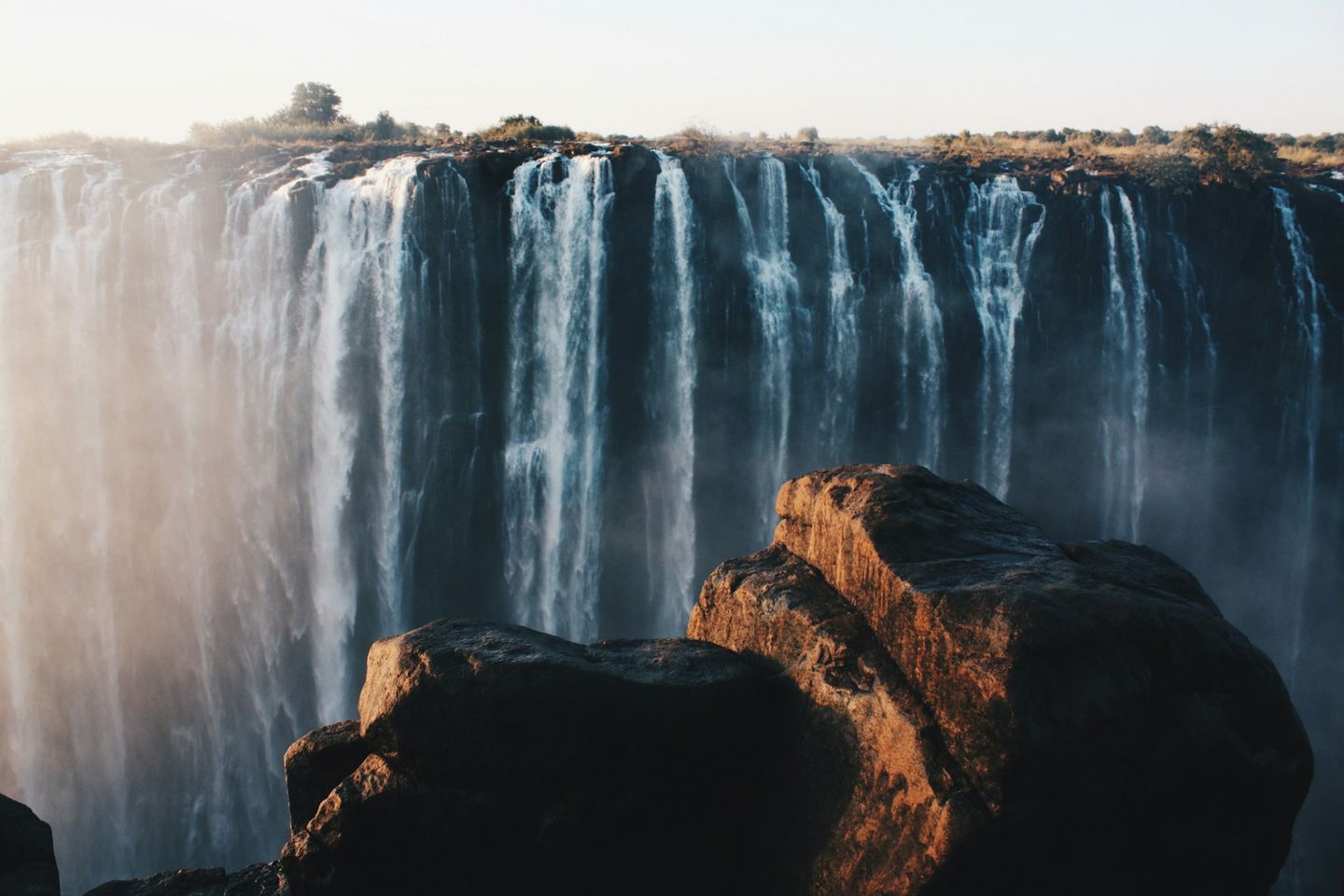1. Zimbabwe is home to the Matobo National Park, known for its stunning granite rock formations, ancient rock art sites, and diverse wildlife, including the highest concentration of leopard in the world.
2. The capital and largest city of Zimbabwe is Harare, known for its vibrant markets, lush gardens, and colonial-era architecture.
3. Victoria Falls, one of the largest and most spectacular waterfalls in the world, is located on the border between Zimbabwe and Zambia, attracting tourists from around the globe with its awe-inspiring beauty and thunderous roar.
4. Great Zimbabwe, a UNESCO World Heritage Site, is an ancient city built of stone in the 11th century by the Shona people, serving as the capital of the Kingdom of Zimbabwe and a center of trade and culture.
5. Zimbabwe was formerly known as Rhodesia, named after British imperialist Cecil Rhodes, until it gained independence from British rule in 1980, leading to the establishment of the Republic of Zimbabwe.
6. The country is home to a diverse range of wildlife, including elephants, lions, leopards, rhinoceroses, and buffalo, making it a popular destination for safari enthusiasts and nature lovers.
7. Lake Kariba, one of the world’s largest man-made lakes, is situated on the Zambezi River between Zimbabwe and Zambia, offering opportunities for fishing, boating, and wildlife viewing.
8. The Matobo Hills, located near Bulawayo, are known for their stunning granite rock formations, ancient rock art, and diverse flora and fauna, including a significant population of black eagles.
9. Zimbabwe has a rich cultural heritage, with over 16 official languages spoken and a variety of traditional dances, music, and ceremonies celebrated by different ethnic groups such as the Shona, Ndebele, and Tonga.
10. The country’s economy is primarily based on agriculture, mining, and tourism, with agriculture employing the majority of the population and contributing significantly to the country’s GDP.
11. The Zimbabwean dollar was the official currency of Zimbabwe until 2009 when hyperinflation rendered it virtually worthless, leading to the adoption of foreign currencies such as the US dollar and South African rand for everyday transactions.
12. Hwange National Park, Zimbabwe’s largest national park, is home to a vast array of wildlife, including one of the largest elephant populations in Africa, as well as lions, giraffes, zebras, and numerous bird species.
13. The Great Zimbabwe Ruins, located near Masvingo, are an archaeological marvel consisting of stone structures built without mortar, believed to have been the capital of the Kingdom of Zimbabwe and a center of trade and culture.
14. The country has faced political and economic challenges in recent years, including hyperinflation, unemployment, and social unrest, leading to international sanctions and political instability.
15. Mana Pools National Park, a UNESCO World Heritage Site, is known for its beautiful scenery, diverse wildlife, and opportunities for canoeing, walking safaris, and wildlife photography.
16. Zimbabwe is home to the highest waterfall in Africa, the Mutarazi Falls, which cascades down a sheer cliff face in the Eastern Highlands, offering breathtaking views and adrenaline-pumping adventures.
17. The country has a rich history of resistance against colonialism and apartheid, with figures such as Joshua Nkomo and Robert Mugabe playing prominent roles in the struggle for independence and social justice.
18. The Eastern Highlands, located along the border with Mozambique, are characterized by mist-covered mountains, lush forests, and picturesque valleys, offering opportunities for hiking, birdwatching, and exploring.
19. The country’s diverse cuisine reflects its multicultural heritage, with dishes such as sadza (a staple maize meal), nyama (meat) stew, and vegetable dishes made with local ingredients such as pumpkin leaves and peanuts.
20. The Zambezi River, one of Africa’s longest rivers, forms the northern border of Zimbabwe and is renowned for its abundant wildlife, scenic beauty, and iconic attractions such as Victoria Falls and Mana Pools National Park.
21. Despite its challenges, Zimbabwe is known for its warm hospitality, resilient spirit, and vibrant culture, making it a fascinating destination for travelers seeking adventure, history, and natural beauty in the heart of Africa.
